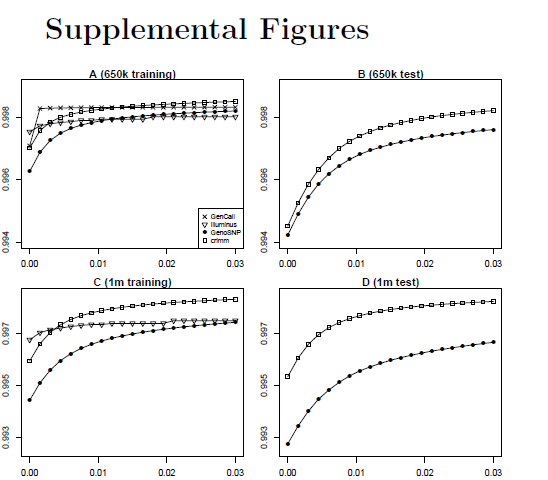#opendata #acsanaheim #pantonprinciples
Last night I asked Jan Kuras of BiomedCentral (BMC) whether any of their publications specifically declared their data as Open [OKD-compliant). Here’s his immediate reply:
Hi Peter
The following papers at BMC Bioinformatics have Open Data within the Additional Files, Tables:
compomics-utilities: an open-source Java library for computational proteomics
Harald Barsnes, Marc Vaudel, Niklaas Colaert, Kenny Helsens, Albert Sickmann, Frode S Berven, Lennart Martens
BMC Bioinformatics 2011, 12:70 (8 March 2011)
http://www.biomedcentral.com/1471-2105/12/70
A comparison and user-based evaluation of models of textual information structure in the context of cancer risk assessment
Yufan Guo, Anna Korhonen, Maria Liakata, Ilona Silins, Johan Hogberg, Ulla Stenius
BMC Bioinformatics 2011, 12:69 (8 March 2011)
http://www.biomedcentral.com/1471-2105/12/69
Comparing genotyping algorithms for Illumina’s Infinium whole-genome SNP BeadChips
Matthew E Ritchie, Ruijie Liu, Benilton S Carvalho, The Australia and New Zealand Multiple Sclerosis Genetics Consortium (ANZgene), Rafael A Irizarry
BMC Bioinformatics 2011, 12:68 (8 March 2011)
http://www.biomedcentral.com/1471-2105/12/68
So I am delighted to blog this and – at least for me – launch the OpenData button as a viable, respected and used tool in clarifying and asserting Openness.
Let’s follow the first link:
Comparing genotyping algorithms for Illumina’s Infinium whole-genome SNP BeadChips
Matthew E Ritchie1,2*  , Ruijie Liu1*
, Ruijie Liu1*  , Benilton S Carvalho3
, Benilton S Carvalho3
 , The Australia and New Zealand Multiple Sclerosis Genetics Consortium (ANZgene)
, The Australia and New Zealand Multiple Sclerosis Genetics Consortium (ANZgene)
 and Rafael A Irizarry4
and Rafael A Irizarry4

1 Bioinformatics Division, The Walter and Eliza Hall Institute of Medical Research, 1G Royal Parade, Parkville, Victoria 3052, Australia
2 Department of Medical Biology, The University of Melbourne, Parkville, Victoria 3010, Australia
3 Department of Oncology, University of Cambridge, CRUK Cambridge Research Institute, Li Ka Shing Centre, Robinson Way, Cambridge CB2 0RE, UK
4 Department of Biostatistics, Johns Hopkins Bloomberg School of Public Health, North Wolfe Street E3035, Baltimore, MD 21205, USA
 author email
author email corresponding author email* Contributed equally
corresponding author email* Contributed equally
BMC Bioinformatics 2011, 12:68doi:10.1186/1471-2105-12-68
|
Published: |
8 March 2011 |
Additional files
Additional file 1:
Supplemental Figures.
Format: PDF Size: 547KB Download file
This file can be viewed with: Adobe Acrobat Reader
And when opened the file contained:

And the BMC explanation of Open Data is consistent with the OKDefinition:
 Brief summary of what Open Access means for the reader:
Brief summary of what Open Access means for the reader:
 Articles with this logo are immediately and permanently available online. Unrestricted use, distribution and reproduction in any medium is permitted, provided the article is properly cited. See our open access charter.
Articles with this logo are immediately and permanently available online. Unrestricted use, distribution and reproduction in any medium is permitted, provided the article is properly cited. See our open access charter.
 By open data we mean that it is freely available on the public internet permitting any user to download, copy, analyse, re-process, pass them to software or use them for any other purpose without financial, legal, or technical barriers other than those inseparable from gaining access to the internet itself. We encourage the use of fully open formats wherever possible.
By open data we mean that it is freely available on the public internet permitting any user to download, copy, analyse, re-process, pass them to software or use them for any other purpose without financial, legal, or technical barriers other than those inseparable from gaining access to the internet itself. We encourage the use of fully open formats wherever possible.
Anyone is free:
- to copy, distribute, and display the work;
- to make derivative works;
- to make commercial use of the work;
Under the following conditions: Attribution
- the original author must be given credit;
- for any reuse or distribution, it must be made clear to others what the license terms of this work are;
- any of these conditions can be waived if the authors gives permission.
Statutory fair use and other rights are in no way affected by the above.
This equates to a CC-BY, not a PDDL/CC0, licence but its effect is to make the data completely Open.
So great kudos to BMC. They have shown the way and it’s now easy for others to follow. Just create a protocol that all scientific data is Open and label it as such. I hope we can see OpenData buttons mushrooimg everywhere.

I’ve just been proofing the HTML for my own paper at J Cheminf (http://www.jcheminf.com/content/3/1/8). Guess what? Everything is marked as Open Data (and the SDF files were *not* converted to PDFs).